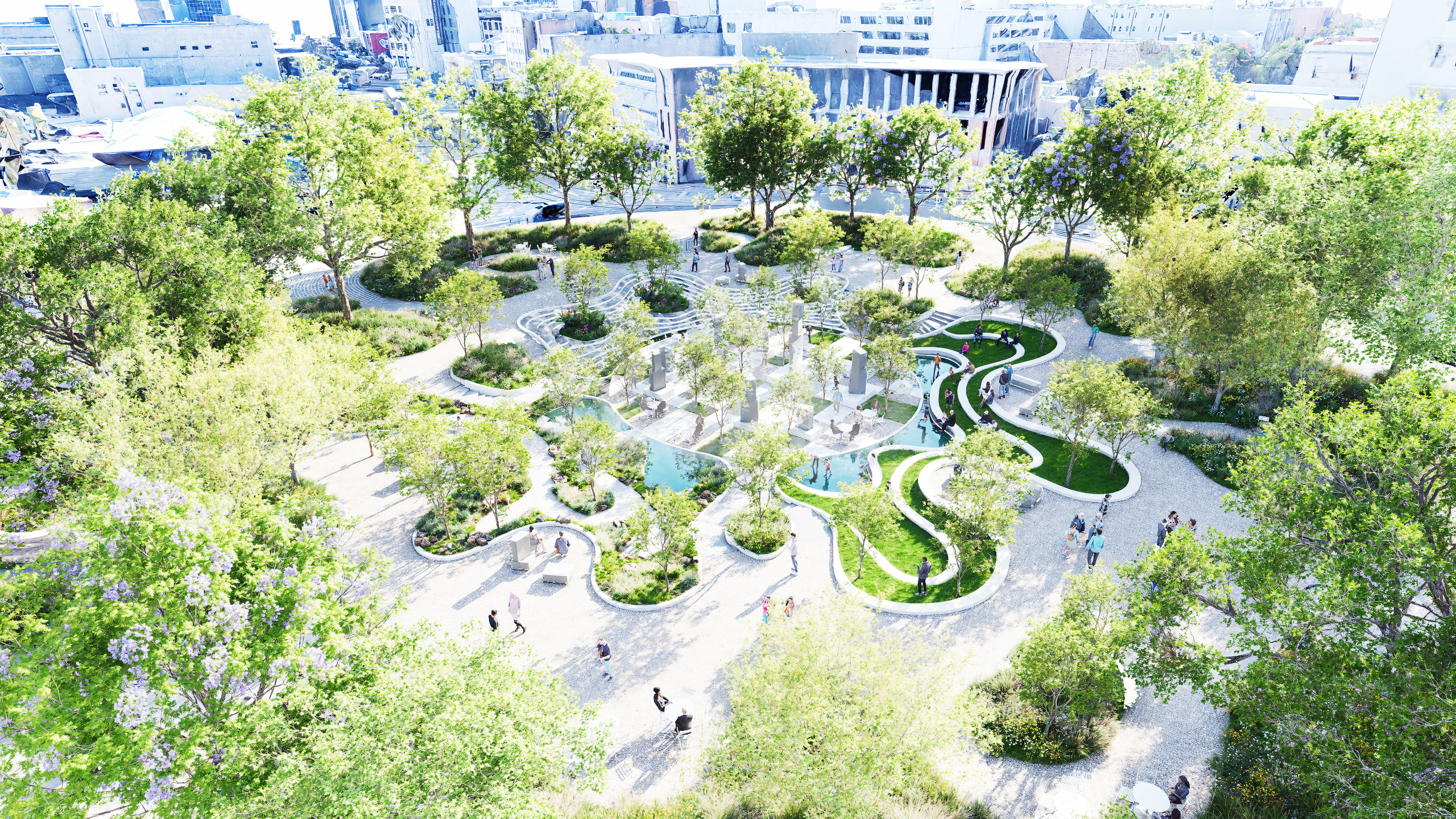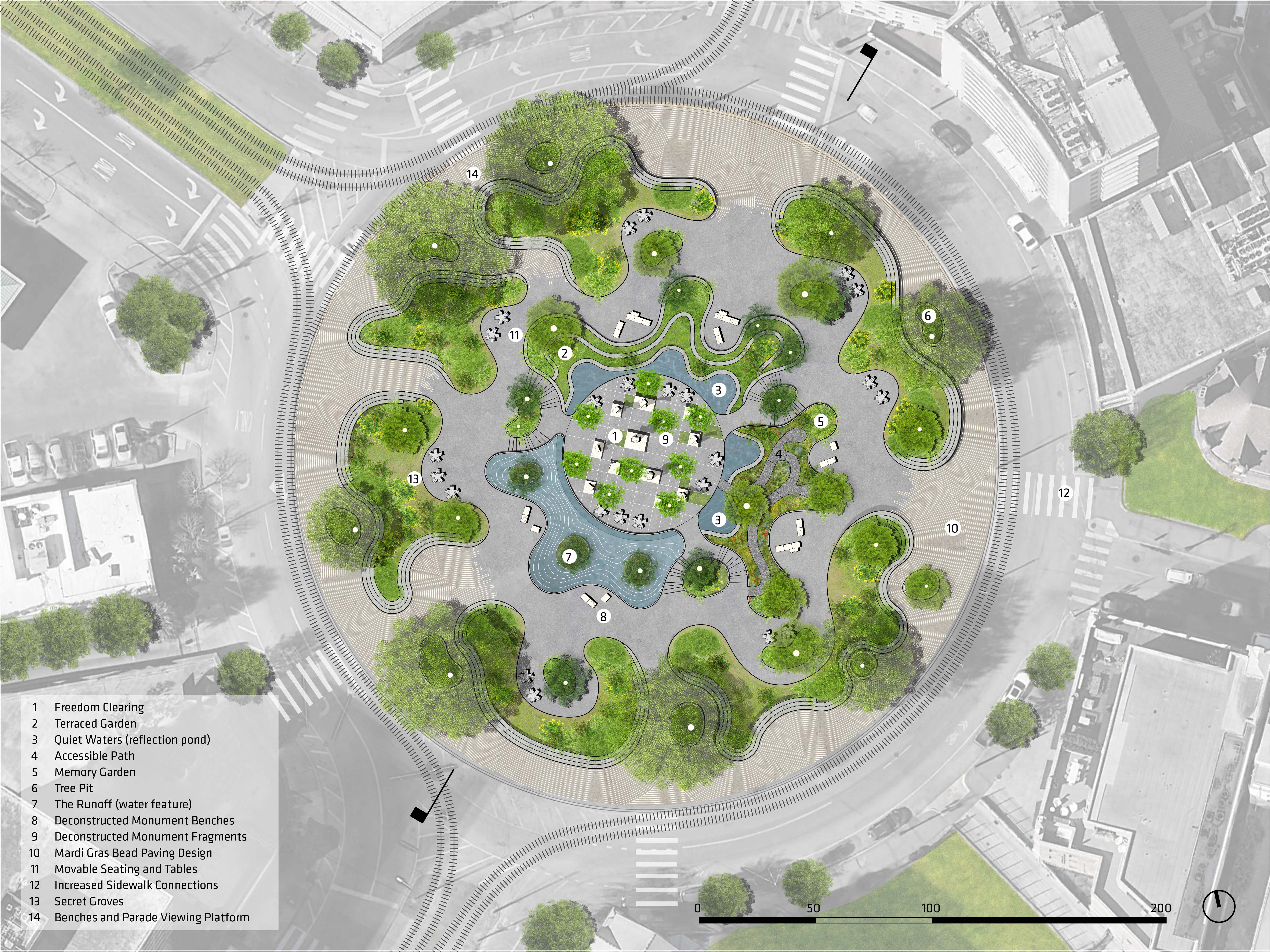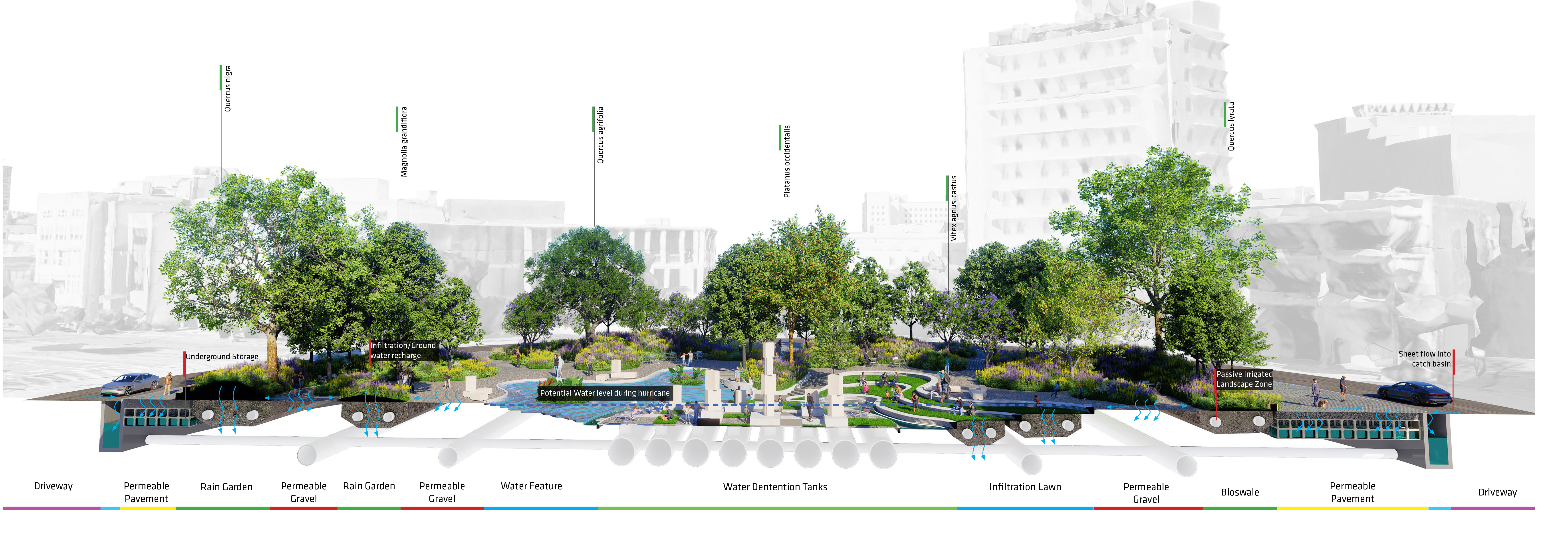

Harmony Circle: Clearing for a Hush Harbor
Hush Harbors were covert sites of resistance: hidden clearings where enslaved people gathered to worship, share knowledge, and find momentary freedom. This project reimagines Harmony Circle in New Orleans as a contemporary hush harbor, a place of refuge, memory, and gathering that directly confronts the site’s legacy as a platform for Confederate commemoration. At its center is the Freedom Clearing, where the dismantled monument’s pedestal and column are reconstituted as sculptural seating. The footprints of the former monument are etched into the paving with bronze, a nod to the original figure. This trace resists reenactment. Rejecting colonial modes of display, the project allows presence to be felt through absence, reuse, and spatial echoes. There is no central icon. The public activates the space through gathering, rest, and conversation. New trees surround the clearing, offering shade and quiet as both spatial and emotional buffers from the city. The Memory Garden, planted with diasporic species brought and cultivated by the enslaved, encircles the clearing with layered histories. Its arrangement follows the logic of community rather than the symmetry of the plantation. A shallow water feature called The Runoff feeds two reflection pools, creating a symbolic threshold between forest and clearing, and between movement and stillness. Along the park’s perimeter, native trees and wild plantings form a living edge that filters sound and view while supporting nonhuman life. At the park’s outermost ring, elevated benches offer space for collective gathering during Mardi Gras and neighborhood parades.
Project Credit: Oliver Shi, Celina Abba, Dingwen Wu
Harmony circle site plan


Section perspective showing the spatial organization and stormwater management